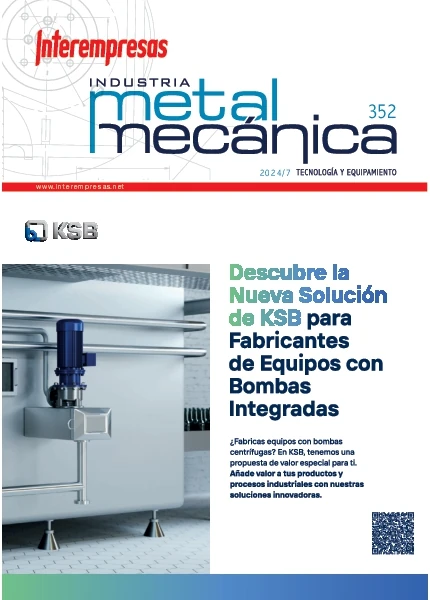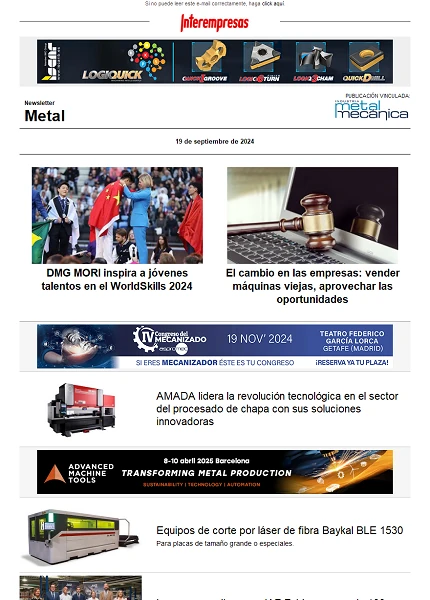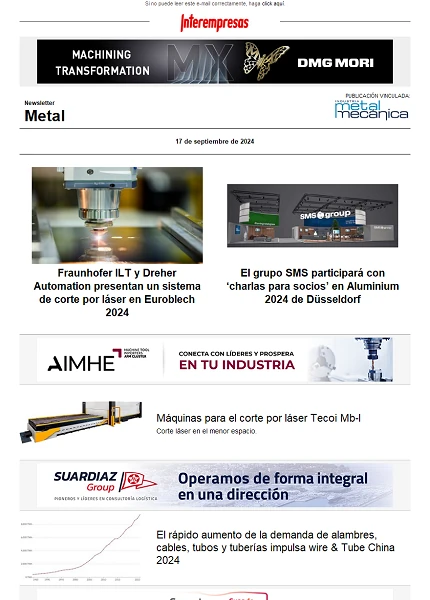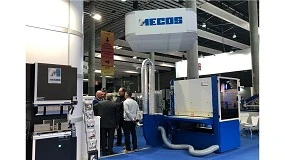Improve the systems of braked of the high European speed
Eddy Current Brake Compatibility (ECUC) is a project of European investigation coordinated by the technological centre CEIT-IK4, and funded by the European Commission inside the 7º Program Marco. The main aim of ECUC is to show that the brakes of currents of Foucault or parasitic currents, in English Eddy Current Brakes (ECB), are a very effective solution and applicable for the increase of the capacity of braked of the new trains of high speed. Besides, the project pretends to resolve the interests posed by the agents of infrastructures in what it does reference to the interoperability with the already installed systems. It treats , therefore, to propose concrete and realistic solutions to surpass the problems that these brakes have presented in some lines of high rail speed.
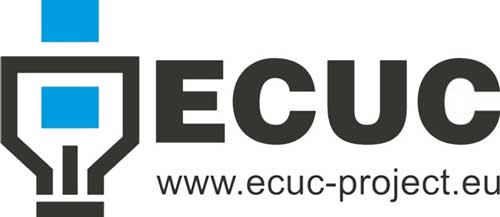
In addition to the centre of investigation CEIT-IK4, like coordinator of the project, the consortium is composed by other 7 pertaining partners to the rail field: a manufacturer of trains, Alstom; a manufacturer of brakes of currents of Foucault, Knorr-Bremse; a manufacturer of systems of signaling, Frauscher; so much the operator of French trains, SNCF, like the German, Deutsche Bahn; the agent of infrastructures of the United Kingdom, Network Rail; and the association of the rail industry, Unife. It treats of a project of three years of length that began in September of 2012 with a near budget to the three million euros.
CEIT-IK4 participates in the project by means of the work of two departments: Electronics equipment dealers equipment dealers and Communications and Mechanical Applied. The work researcher of the personnel of the Area of Electronics equipment dealers equipment dealers and Communication of CEIT-Ik4 has a wide experience in the fields of the industrial electronic systems, especially in the ones of the rail surroundings. Of the same way, the department of Mechanics Applied carries more than 20 years working in rail projects in collaboration with companies of the sector.
In his support to the average company and collaboration with big companies, during the last 30 years, the centre has bet by the development of a powerful technological offer through projects of investigation applied under contract with the industry, a task that assent on the principles of the scientific excellence, the publication of articles in international magazines and the realisation of thesis doctorales.
To the more than 100 projects of investigation that realizar annually to give solutions to exclusive demands and individuals it is necessary to add his record in the creation of 12 new companies of technological base or spin-offs, with around 300 employees, what shows the applicability of the investigation realizar.
Brakes of currents of Foucault or parasitic currents (Eddy Current brake)
This type of brakes bases in a simple principle: a magnetic field through a short space of air between the brake composed by magnets and the road produces a strength of braked because of the losses by parasitic currents or currents of Foucault. Like the magnetic field joins up through the space of air between train and railway industry, does not exist mechanical contact between the brake and the road. Of this way, the strength of braked is independent of the coefficient of friction, and these brakes guarantee a high efficiency independently of the adherencia films-lane. This means that they can apply strengths of braked, that keep almost constant, even in applications of high speed. This strength of braked is controlled with precision by means of the regulation of the magnetic field generated.
As it has quoted previously, the currents of Foucault are induced by the movement of the train and the generation of a magnetic field. Thus, the deceleración of the train depends on the speed, and what faster circulate the train, greater will be the strength of braked for a same magnetic field.
The use of linear brakes of currents of Foucault in the material rodante shortens the distance of braked and reduces the dependency of the capacity of braked real in the properties of adherencia films-lane. Of this way, will improve the rail hygiene and will contribute also to improve the flow of traffic of trains in the lines ETCS increasing the deceleraciones guaranteeed in each case. On the other hand, by means of the use of these brakes reduces the use of systems of braked of friction, what reduces to a large extent the cost of the cycle of life of these last.
Besides, exist another type of advantages because of the utilisation of the brakes of parasitic currents in the trains. In the first place, they are brakes without wear, that do not give off smell neither fine dust. In terms of cost, the capacity to carry out the majority of the applications of the brakes of service without need to use the brakes of friction results in a reduction of the costs of maintenance. Besides, if the source of feeding of excitation is independent of the catenary of feeding, the brakes of parasitic currents can be used as of brake of emergency.
However, the use of these brakes can involve some problems that are taking into account in the project. The installed brakes in the train are heavy equipment, by what the bogie where will situate the system has to be designed specifically. Besides, the control of the space of air between the lane and the magnet is critical by what will be necessary to enter a logic of control for this.
In spite of this, the brakes of parasitic currents have been used successfully, for example, in Germany during the last almost 10 years in the train model ICE-3, property of DB, in the lines Frankfurt-Colony and Nuremberg-Ingolstadt. In the actuality, the administrators of infrastructures limit his application to the specific road in plate and with balasto. Likewise, they have been identified some interferences between the brake and some systems of signaling, in addition to problems termo-mechanical between the system of braked and the infrastructure. On the one hand, some systems of signaling, such like counters of axles are disturbed by the signals irradiated of the brakes. On the other hand, the increase of temperature that reaches the road, the longitudinal strengths and the additional vertical strength can drive to the deformation of the lane.
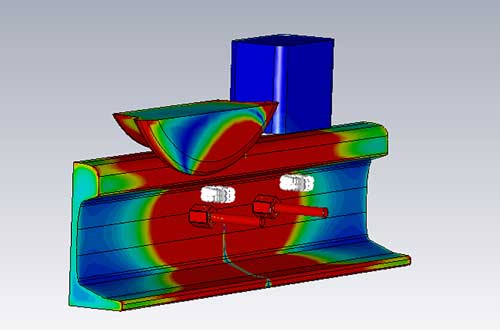
Aims of the project
The main aim of the project is to show that this type of brakes are highly efficient and that will allow better characteristic of braked in the new trains of high speed. With this main aim, have defined the following aims of second level:
- Comprise the interaction between the brake and the infrastructure and between the brake and the equipment of signaling in road.
- Identify the parameters termo-mechanical and electromagnetic critics and the limits of compatibility with regard to the vehicle and to the systems of the road.
- Design some surroundings of proof like first step for the homologation of the brakes of currents of Foucault, centring no only in the functionality, but also in the thermal sensors requirements, mechanics and electromagnetic.
- Design the procedure of proof that allow to re-create the conditions more desfavorables to show the compatibility between ECB and the rest of systems of the surroundings: material rodante, roads and systems of signaling.
- Develop new guidelines of design for this type of brakes and for the systems of signaling that can see affected.
- Finally, pretends improve the process of normalisation of the brakes.
Structure of the project
With the aim to guarantee the achievement of the aims of investigation and innovation posed in the project, has elaborated a program of work divided in five packages of technical work and two packages of work devoted to the management and diffusion of results.

Results expected
The results of the project expected are the technical recommendations and the guidelines of design of the systems analysed in the project. These technical recommendations are the first step to a standardisation of the clear-cut requests in this project and have like main objective fill the empty in the Technical Specifications of Interoperability (Technical Specifications for Interoperability) published by the European Agency of the railway industry industry (WAS). These technical recommendations will base in the results of the packages of technical work described previously and will centre in three big groups:
- Definition of new requirements for the brake of currents of Foucault as they can be the maximum weight or the maximum consumption of power.
- Definition of new requests of compatibility for the systems of signaling, for the material rodante and for the infrastructure in which it will use the brakes. To continuation show some examples of each one of the groups:
- Definition of requirements to complete the standard IN50238 - 3 (compatibility between the material rodante and the counters of axles)
- definition of requirements like the maximum demand of power or the installation of the of brakes that can affect to the material rodante
- Definition of longitudinal strengths, lateral and vertical maximum on the road.
- Definition of new procedures of proof to realizar the proofs of the brakes in the worst conditions with the aim to show the compatibility between the brake of current of Foucault, the material rodante, the systems of signaling and the road.
Besides, will define the guidelines of design for the brake of currents of Foucault, for the installation of the brakes in the material rodante, for the systems of signaling and for the roads.
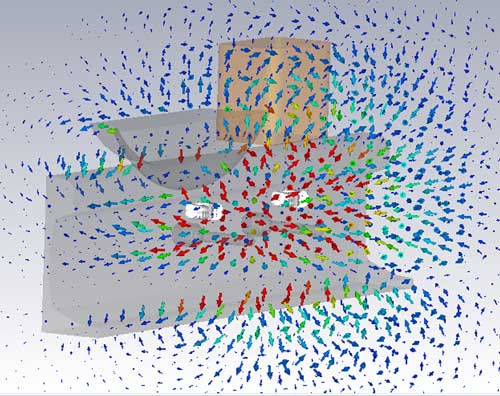
Results obtained until the moment
During the first year of project, and inside the second package of work, has realizar an analysis of the previous experiences with this type of brakes. In addition to this, have defined the parameters of design of this type of brakes and the requests in base to the analysed in the European rule of railway industrys. Finally they have related the parameters of design with the requests defined previously. The documentation generated will be published during the year 2014.
In parallel and from principles of year, inside the third package of work, is working in the electromagnetic modelling and termo-mechanical of the interaction between the system of brakes and the infrastructure. This modelling will allow to comprise this interaction and will be the first step for the definition of the worst cases of proofs that will realizar in the year 2014 and 2015. So much the electromagnetic modelling like termo-mechanic is being developed in the departments of Electronics equipment dealers equipment dealers and Communications and Mechanical Applied of the CEIT, respectively.




